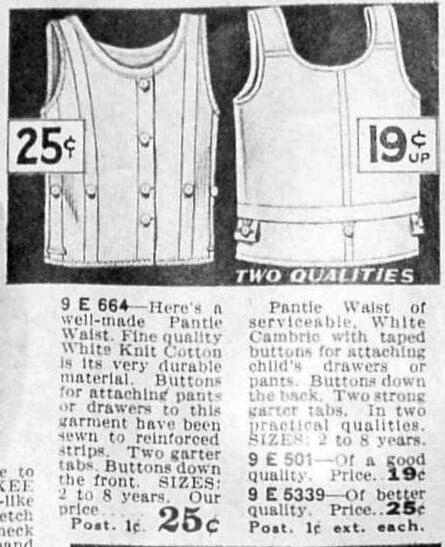
Figure 1.--Here are the two pantie waists (underwaists) offered by Lane Bryant in their 1935 catalog. |

|
Lane Bryant refers to these underwaists as a "pantie waist". They are probably more commonly called "panty waists". This is the origin of the derisive term "panty waist". I am not sure when the term began to be used. The term panties mening children and womens underpants appeared about 1840 in America. The term "pantywaist is of much more recent origins. It seems to appear about 1925-30 a few years before this Lane Bryant appeared. We suspect the fact tht Lane Bryant was a company offering ladies apparel that the staff was less concerned thn other companies about the slag usage of the term by boys. At any rate, pantie/panty waist is less commonly used than underwaists.
Lane Bryant offered two styles donr in different materials. Both were dine for younger children, age 2-8 years of age. Notice the back buttoning.
Lane Bryant refers to these underwaists as a "pantie waist". They are probably more commonly called "panty waists". This is the origin of the derisive term "panty waist". I am not sure when the term began to be used. The term panties mening children and womens underpants appeared about 1840 in America. The term "pantywaist is of much more recent origins. It seems to appear about 1925-30 a few years before this Lane Bryant appeared. We suspect the fact tht Lane Bryant was a company offering ladies apparel that the staff was less concerned thn other companies about the slag usage of the term by boys. At any rate, pantie/panty waist is less commonly used than underwaists. A reader writes, "I have a thought that pantie waist also may take into account how someone had to have help getting into their clothes (usually the mother) which may have been seen as unmanly. Especially with the back buttoning variety." Another reader tells us, "One commonly sees two spellings of this term--both " panty waist " and " pantie waist ." The two spellings were used interchanageably in American parlance. But the most common term in American catalogs (especially in Sears and Wards catalogs) is
"underwaist". I think the reason that Sears and Wards avoided the term "panty waist" was because it had come to have very negative connotations with boys--and especially boys aged 8 or older. Most of these waists were made for children (both boys and girls) up to the age of 12. Perhaps the reason the term is used by
Lane Bryant is that the underwaists (or "pantie waists") advertised
here are only for children up to the age of 8, children who probably
wouldn't have the same strong objection to the term "pantie waist."
Sears and Wards were offering the same type of garment for a wider age
range of children, so it would make sense for them to avoid the term
pantie waist."
Underwaists were another type of support garment. Underwaists (sometimes called panty-waists) were worn by younger boys and girls to support additional underwear (such as bloomers or panties) or outer clothing (such as trousers or skirts). These bodices tended to be worn by boys only until about age 10, although some models came in ages for boys as old as 12. Some models were specifically for girls and others for boys, but the great majority of styles could be worn by both boys and girls. They tended to be made of elastic knitted fabric (and therefore rather form-fitting) or of cambric material and a bit looser. They nearly always were equipped with reinforcement straps, waist buttons, and garter tabs for attaching hose supporters. The popularity of underwaists declined in the later 1930s and early 1940s although they were still available, usually in the preferred knitted style, up until about 1945. When long stockings stopped being worn by school children, the main function of the underwaist ceased to exist.
Lane Bryant offered two styles donr in different materials. Both were dine for younger children, age 2-8 years of age. Notice the back buttoning.
The ad copy read, "9 E 664- Here's a well made Pantie Waist. Fine quality White Knit Cotton is its very durable material. Buttons for attaching pants or drawers to this garment have been sewn to reinforced strips. Two garter tabs. Buttons down the front. SIZES 2 to 8 years. Our price 25 cent Post 1 cent."
The ad copy read, "Two qualities: Pantie Waist of serviceable, White Cambric with taped buttons for attaching childs drawers or pants. Buttons down the back. Two strong garter tabs. In Two practical qualities. SIZES 2 to 8 years.
9 E501 of a good quality, Price 19 cents, 9 E5339 of better quality, Price 25 cents Post. 1 cent ext. each.
Navigate the Boys' Historical Clothing catalog/magazine pages:
[Return to the Main Lane Bryant 1935 underwear page]
[Return to the Main American mail order 1935 page]
[Main photo/publishing page]
[Store catalogs]
[Fashion magazines]
Navigate the Boys' Historical Clothing Web Site:
[Introduction]
[Activities]
[Biographies]
[Chronology]
[Clothing styles]
[Countries]
[Bibliographies]
[Contributions]
[FAQs]
[Glossary]
[Satellite sites]
[Tools]
[Boys' Clothing Home]
Navigate the Boys' Historical Clothing Web Site:
[Sailor hats]
[Flat caps]
[Sailor suits]
[Buster Brown suits]
[Eton suits]
[Rompers]
[Tunics]
[Smocks]
[Pinafores]
[Knickers]
[Long stockings]
[Kneesocks]
[Underwear]
